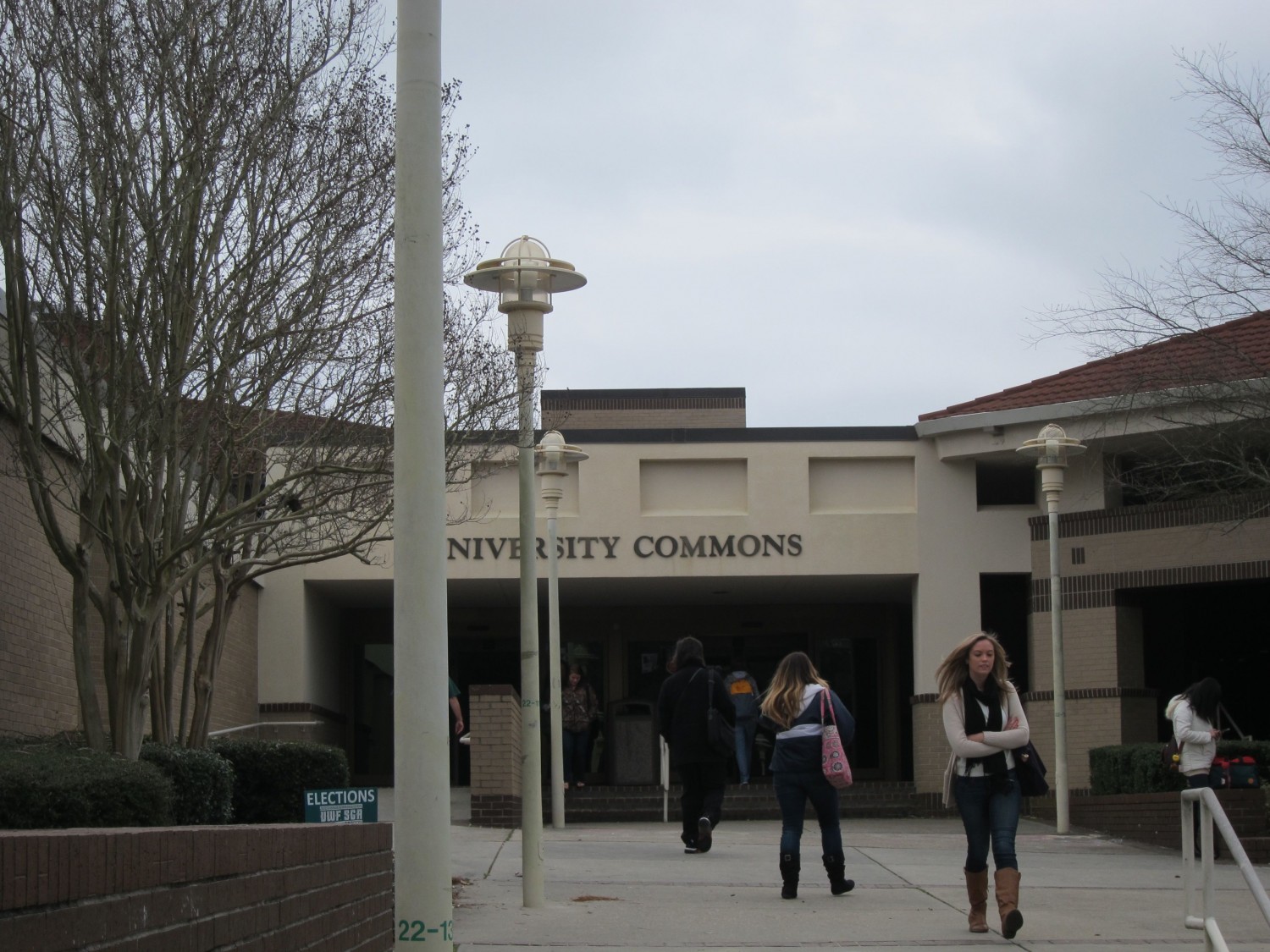The burden of college debt weighs on grads
- July 27, 2015
- / Carlton Proctor
- / economy

In a few weeks Katy Winter will graduate with a master's degree science administration, specializing in healthcare administration from the University of West Florida.
Complementing her graduate degree is the bachelor’s degree she earned previously in health care administration, also from UWF.
While in high school, the Gulf Breeze native took advantage of dual enrollment programs at Pensacola State College, won a Bright Futures scholarship and was fortunate her father paid for her undergraduate degree.
But when she decided to attend graduate school, her father said he would lend her the money, but she would have to repay the loan.
"I think my out of pocket cost for the four semester of graduate school has been about $7,000."
While that's a lot of money for Winter, a 23-year-old contract manager at the Escambia County Health Department, she is among the fortunate.
Her relatively low student debt, coupled with her $36,000 annual salary, puts her in a much better financial position to pay off her loans than most students just out of college.
Conversely, the typical UWF graduate today walks away with a diploma in one hand and a debt of some $20,000 in the other, says Shana Gore, director of UWF's Office of Financial Aid.
And that figure doesn't include student loans secured through private lenders, such as Sallie Mae and participating banks and credit unions.
Even that large a figure is below the national average of just under $30,000, according to the U.S. Department of Education, which keeps data on student debt.
Overall, there are some 40 million Americans with an astounding $1.2 trillion in outstanding student loans.
And that figure is growing, Gore says, as colleges and universities continue to raise tuition and other costs as a result of sharp cuts in state, federal and private sector funding.
In the great scheme of things, a $1.2 trillion debt pales against the National Debt of $18.15 trillion (as of June 30, 2015).
But many experts warn student debt is having a negative effect on the U.S. economy.
Heavy debt loads are a millstone around the necks of millennials and other young, post-college age workers who, as a result, postpone home purchases, childbearing and marriages.
Winter is no different; she is taking a large percentage of her salary every month to repay her father.

Katy Winter at the University of West Florida Monday, July 13, 2015. She will graduate with a master's degree in Public Health from the University of West Florida in a few weeks. (Michael Spooneybarger/ Pensacola Today)
"He put all of my graduate school tuition costs on his credit card, and I'm trying to pay him back $500 to $700 per month out of my biweekly paycheck," Winter said.
Otherd say college debt also is stifling young people who want to start a business or engage in something entrepreneurial.
Colleges aim to help
As the numbers grow, and the economy suffers, colleges, universities and students themselves are fighting back, taking a proactive approach to managing and mitigating student debt.
The first thing we do when a student comes on campus is encourage them to complete the Free Application for Federal Student Aid," Gore said. "Those FAFSA forms are available every January prior to the start of the academic year in August."
That form compiles financial information about the student and their family, and is used by UWF's Financial Aid office to determine eligibility for federal student loans, state grants and work-study programs.
"It's a form that's online and students can do it by themselves, or with a parent," Gore said. "Most guidance counselors in high schools offer assistance to their seniors to help them complete it."
Financial literacy is becoming more prominent in high schools, and even some middle schools, says Patty Veal, director of public relations for Pen Air Federal Credit Union.
Pen Air sponsors a sponsors a financial academy at Washington High School, and under its Biz Kids Program offers resources to teachers, including a 65-episode, DVD boxed-set that form a curriculum for high school teachers to instruct students on managing finances and student debt.
In 2014, Veal said Pen Air donated 41 of the professionally produced box sets to area schools.
Although use of the DVD set is voluntary, Veal said, "I do know in Florida there are proposals on the table to have financial literacy mandated at high school level. I think the general consensus is that this is important. The feedback we're getting has been very positive, and the students love learning this way. Each episode is like watching a TV show."
Once out of high school and upon entering college as freshmen, UWF holds a mandatory orientation where the advantages and pitfalls, of financial aid are discussed in detail, including a session on "responsible borrowing."
UWF also offers financial literacy events twice in fall and twice in spring where all students are invited. This event covers student loans, credit cards and budgeting.
"We want to help students think not only about what they are borrowing for school, but also focus on credit card issues, because many students find themselves being approved for credit cards, and when they graduate they have a high card debt," Gore said.
Federal loan programs limit college students to $5,500 a year. Students approved for federal loans, which are not collateralized, also must maintain at least a 2.0 grade average and complete at least 67 percent of the courses they attempt.
A Student Loan is Forever.
Federally backed student loans are protected under U.S. financial regulations, and are not subject to bankruptcy laws.
While many people default on student loans, the debt never goes away until paid in full.
Each college and university participating in the federal student loan program is given an annual default rate, along with the number of borrowers who are current with their repayment.
For the University of West Florida, the student loan default rate has averaged around 9.5 percent over the past several years.
In 2011, for example, the default rate was 9.6 percent, or 181 total students, and former students, in default on their loan payments, according statistics provided by the U.S. Department of Education, which tracks student loans.
"We do reach out to students in default on the loans and work with them to find a payment plan, based on income, that they can manage," Gore said.
UWF keeps an eye on its default rate and has access to demographic data that can help determine which students and graduates are likely to go into default on their loans.
"Because a federal student loan cannot be written off in bankruptcy, the debt will always be there," she said. "The federal government will do wage garnishment, and deduct loan payments from an individual's tax refund.
"We have students who contact us every year in the March-April time frame who say they haven't received their tax refunds. Then they get a letter from the Department of Education saying, 'Thank you, $2,000 of your student loan has been repaid.'"
Gore said she also frequently sees students trying to buy a house, but are in default on their student loan, and, thus, are precluded from closing the sale.
"I even had one student who had taken out loans over 30 years ago," she said, "and for some reason had no wages to garnish, nor had received tax refunds, and when they started receiving Social Security payments, the Department of Education began garnishing those payments.
"Your student loan is never going away until it's repaid in full," Gore said.
Often, students will need more than $5,500 a year, and turn to private lenders, a move that UWF discourages. Private student loans are not bound by the same regulations that apply to federal loans.
"We don't want students to borrow, but when seeing state funds and fed funds cut, we realize students will have to make up that difference somewhere," Gore said.
Debt load meets job market reality
Another aspect of teaching students financial literacy is ensuring college graduates have a realistic expectation of what their salaries will be once out in the real world.
"Many students have unrealistic expectations," said Gore. "The majority of students will be making close to $30,000 in the first few years they enter the workforce.
"But many freshmen who come in looking to borrow think they will be making closer to $60,000 and $70,000," she said.
The latest data from the Florida Board of Governors' office shows the median wages of undergraduates employed in the Sunshine State one year after graduation is $32,900.
With no end in sight to rising tuition costs, along with associated living expenses for college students, Gore says she is encouraged by some positive trends among parents and students.
"I'm seeing some trends in last few years where students, and parents, are being more conscientious about what they are borrowing," she said. "They are asking more questions, looking at other options."
Rick Harper, assistant vice president, and director of the Office of Economic Development and Engagement, said this cost-conscious trend among students and parents is taking hold at UWF and at Pensacola State College.
In 2012 Gov. Rick Scott signed a law requiring that an Economic Security Report be published annually by Florida’s Department of Economic Opportunity.
Sen. Don Gaetz, R-Niceville, authored the bill to provide families with the information they need to make the best choices about education alternatives, Harper said.
It describes salaries, employment prospects, typical student loan levels, and other information pertaining to various programs of study at Florida’s public education institutions.
"The good news is that UWF and PSC students graduate with the lowest federal student loan debt of any schools in their respective systems," Harper said. "This is important in an era in which student debt is high and rising."
The average annual federal student loan debt of $4,600 carried in 2011-12 by a UWF student was about 16 percent less than the state average, Harper's data shows.
Students at PSC had an average of $1,395 in federal student loan debt per student.
Harper added while the state's Economic Security Report doesn’t provide a statewide median across colleges, "it is clear that PSC debt per student is the lowest in the state."
Gore said student debt, and frequency of borrowing, is on the down trend as student and parents try to stretch available dollars in the face of rising higher education costs.
"We seeing some students taking just $1,000 instead of full $5,500," she added. "Our average debt for students who graduate is much lower than national average, so I think we are doing some things in the right direction to manage student debt."
 CivicCon launches with a look at good growth in cities
CivicCon launches with a look at good growth in cities
 Building stronger brains one baby, one parent at a time
Building stronger brains one baby, one parent at a time
 SCI debuts commercial on Early Learning City
SCI debuts commercial on Early Learning City
 Entrecon: World class speakers and an opportunity to sharpen skills
Entrecon: World class speakers and an opportunity to sharpen skills
 PYP Quality of Life survey 2017
PYP Quality of Life survey 2017
 EntreCon Pensacola 2016: A look back
EntreCon Pensacola 2016: A look back
 Leadership tip: getting better employee takeaways
Leadership tip: getting better employee takeaways
 Leadership tip: be interested instead of interesting
Leadership tip: be interested instead of interesting
 Leadership tip: delivering difficult messages
Leadership tip: delivering difficult messages
 Brain Bags boost Arc, Early Childhood Court programs
Brain Bags boost Arc, Early Childhood Court programs